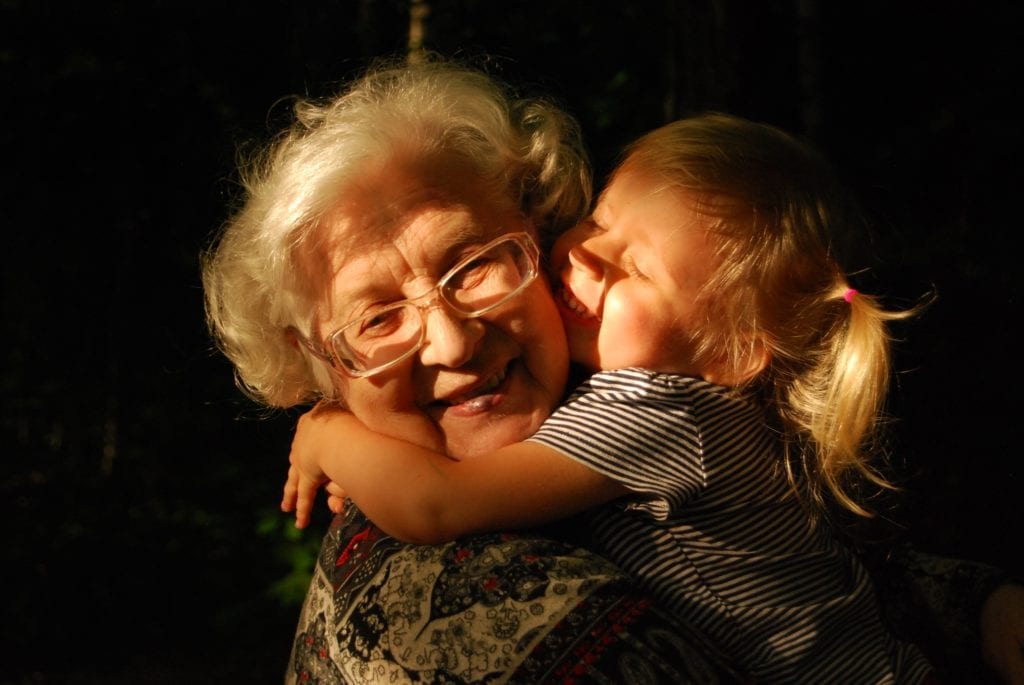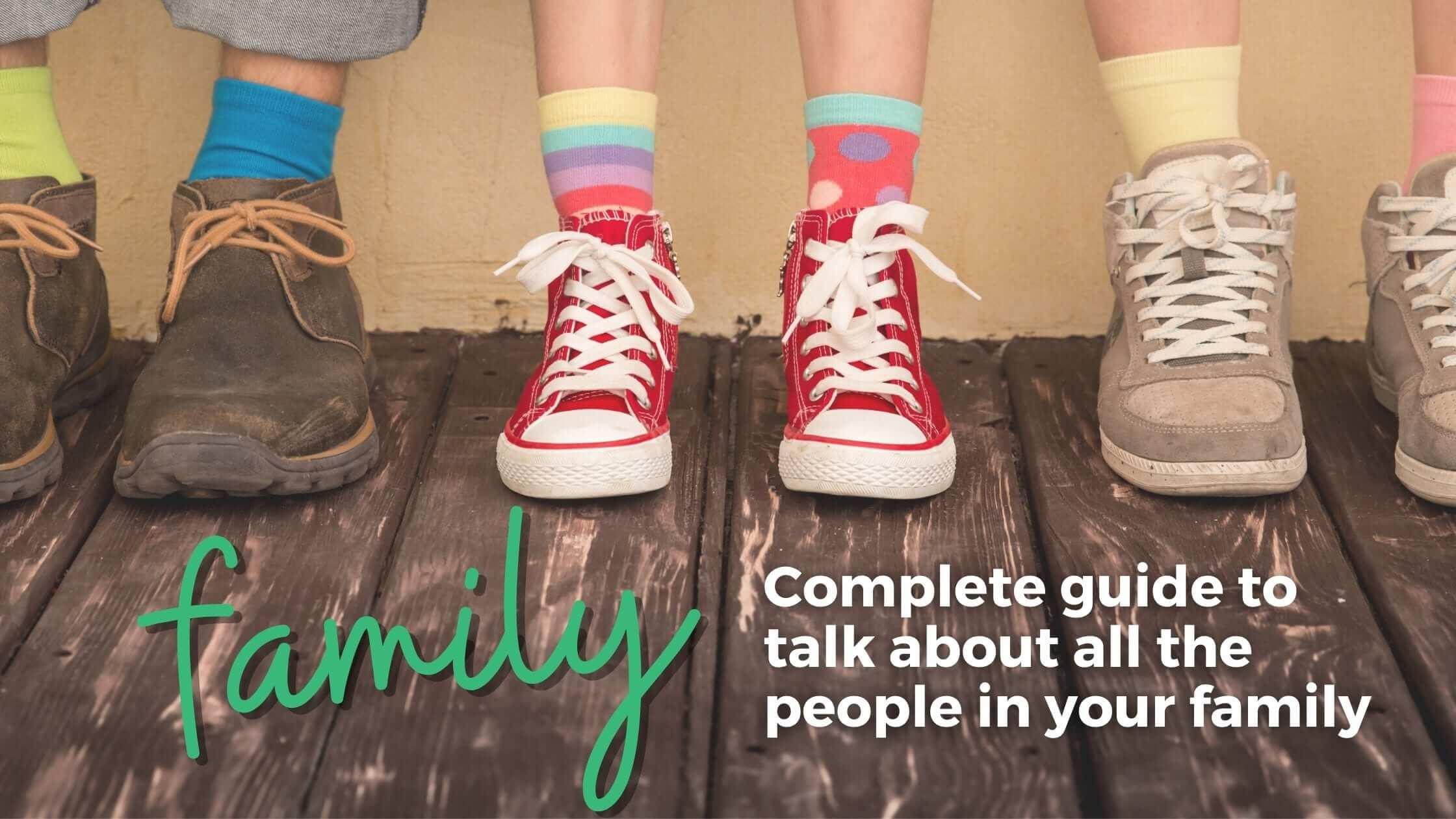Complete Guide to English Family Vocabulary with Exercises
Have you ever heard of the concept of a ‘modern family’? No, we are not talking about the famous TV show (not yet at least). Do you have a modern family? Most people do, nowadays. If so, you should read this guide to improve the way you talk about your family. Your family vocabulary should be real, relevant, and meaningful. Plus, this guide to the family vocabulary in English will teach you the important terms with examples and vocabulary exercises to practice them.
Family Vocabulary in English
Let’s take a look at the definitions of the different types of families: immediate, extended, step-family, God-family, and the in-laws. We will also go over the difference between nuclear and extended family. In order to practice this new family vocabulary in English, we have prepared some exercises for you!
Describing adults in immediate family
You may already know the family vocabulary for immediate members, but if not, read on! The immediate family is also called a nuclear family (see more about this family below). The family typically has two adults who may be married or cohabitating (living together). If they are married, they may call each other as husband and wife (a male partner and a female partner, respectively). A common nickname for a husband is hubby and for a wife you may hear wifey. If the couple is not married, they may simply refer to each other as partner or even boyfriend and girlfriend, depending on the couple’s preference. A gender-neutral term for a partner in formal instances is ‘significant other.’ A cute term between partners may be ‘my other half.’ While there are countless ways to describe this relationship, it is important to always respect the couple’s choice on how they refer to each other.

If the adults are also parents, or have children, they can be called father and mother. Father and mother are the most formal terms to use to describe a male and female parent. Other common English terms for a mother and father include mom and dad in American English, and mum in British English. Some people also use terms for their parents like daddy, mommy or mama. These may sound infantile though, so not many adults use these terms. Another common word for parents when being addressed by their children is folks. You’ll hear this often from adult children.
English vocabulary to talk about children in the immediate family
Parents may refer to their children as kids or kiddos. If the child in question is a boy, parents will call him a son. If they have two or more sons, it is common for them to refer to them as my boys. A parent may say: “I have to pick up my boys at soccer practice tonight.”

If the child in question is a girl, parents will call her daughter. In the case they have two or more daughters, you may hear parents say ‘my girls’. A parent may say something like this: “My girls are coming home tomorrow. It’s been a month since they left for college.” A parent may refer to his/her children as boys or girls even when they are adults.
Sisters, brothers, siblings
The daughters and sons of a determined couple will refer to one another as a sister or brother. If my parents have another child and this child is a girl, she is going to be my sister. If the child is a boy, he is going to be my brother. A person who has one brother and one sister has two siblings. A sibling is either a brother or a sister. If you don’t have siblings, you are an only child.
When you have a sister who was born on the same day as you, you have a twin sister. If you have a brother who was born on the same day as you, you have a twin brother. Famous twins are the actresses Mary-Kate and Ashley Olsen, as well as Scarlet Johansson and her twin brother Hunter Johansson. It is important to remember that not all twins look exactly alike nor all of them are of the same gender. If the twins look exactly alike, we call them identical twins. If not, that means they are fraternal twins.
You may also have siblings that you don’t share the same parents with. If you share a mother but have different fathers, or your father is the same, but your mom is not, you are half-siblings. For siblings who are boys, we call them half-brother. If your sibling is a girl, she is your half-sister.

Extended family
Let’s take a look a a list of extended family member vocabulary.
Your parent’s sibling is your uncle (if he is a man) or your aunt (if she is a woman). If your aunts or uncles have children, they are your cousins. We use the word cousin for both females and males.
You call a man your grandfather (or grandpa) if he is your mom’s father or your dad’s father. A grandmother, often referred to as ‘grandma’, is your mom’s mother or your dad’s mother. Your grandfather and your grandmother are your grandparents. You are their grandson (if you are a man) or their granddaughter (if you are a woman).
Your sibling’s children are also considered your extended family. If your brother or sister has a daughter, she will be your niece. If they have a son, he will be your nephew.
Stepfamily
Many ESL students ask about these family members and the right vocabulary to describe them – the stepfamily. We will talk now about stepfamilies. A stepfamily is a family in which one or both adult partners have children from a previous relationship. If your parent is married to a person who is not your mother or father, that person is your step-parent (stepmother if female, stepfather if male). If your stepfather or stepmother has children from their previous relationships, they will be your stepbrother, if he is a boy, and your stepsister, if she is a girl. You can also refer to them as stepsiblings.
The 2005 movie Yours, Mine and Ours, which is a remake of the 1968 film of the same name, tells the story of Frank and Helen, two high school sweethearts who meet again after years apart. They are both widows and decide to get married. The problem is that Frank has 8 kids from his previous marriage and Helen has 10 children, four biological and six adopted. This a good movie for you to understand the concept of a step family.
God family
A God family is a concept common for those who live a Christian life, even though some nonreligious people also follow this same concept. When parents choose a woman, which can be a close friend or relative, to be the godmother of their child and a man to be the godfather of their child, they hope this person will take care of their kid if eventually something happens to them. The godmother and the godfather then will call their friend’s or relative’s child their godson, if he is a boy, or goddaughter, if she is a girl.
In-laws
When we have a partner, which can be a husband, a wife, a boyfriend, or a girlfriend, we will refer to their families as our in-laws. As you start to build a life with your partner, his/her family will also become yours. His/her mother will be your mother-in-law and his/her father will be your father-in-law. For their parents, you will be their son-in-law, if you are a man, or their daughter-in-law, if you are a woman. If you partner has siblings, you may refer to them as brother-in-law or sister-in-law, based on their gender.
Modern Family: examples from a popular TV family
If you haven’t watched this show yet, I highly recommend you to do so. The first season of Modern Family was released back in 2009 and the series finale was aired last April after 11 successful seasons. The series tells the story of one extended family comprised of three immediate family groups.
The patriarch is Jay, who has two adult children, Claire and Mitchell. Claire is married with three children. Mitchell and his partner have one daughter, a baby they adopted in the first episode of the series. Jay has recently remarried, and has a new stepson at home. During the 11 seasons, the families grow and develop stronger relationships despite their differences. Check out this video about the family tree of Modern Family:
Jay’s Family
- Jay – Gloria’s husband, Manny’s stepdad, Claire and Michael’s dad
- Gloria – Jay’s second wife, Manny’s mom
- Manny – Gloria’s son, Jay’s stepson
Claire’s Family
- Claire – Phil’s wife, Haley, Alex and Luke’s mother
- Phil – Claire’s husband, Haley, Alex and Luke’s father
- Haley – Claire and Phil’s daughter
- Alex – Claire and Phil’s daughter
- Luke – Claire and Phil’s son
Mitchell’s Family
- Mitchell – Cameron’s husband, Lily’s dad
- Cameron – Mitchell’s husband, Lily’s dad
- Lily – Mitchell and Cameron’s daughter
Practice time: who is who in Modern Family?
Now that you understood the family tree of this modern family, let’s practice! Drag the words to complete the sentences below with the right family vocabulary in English. Each word is only used once.

